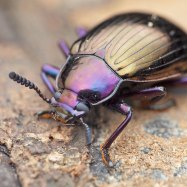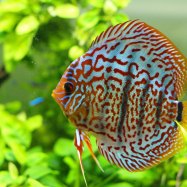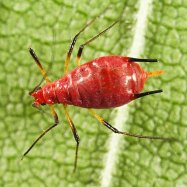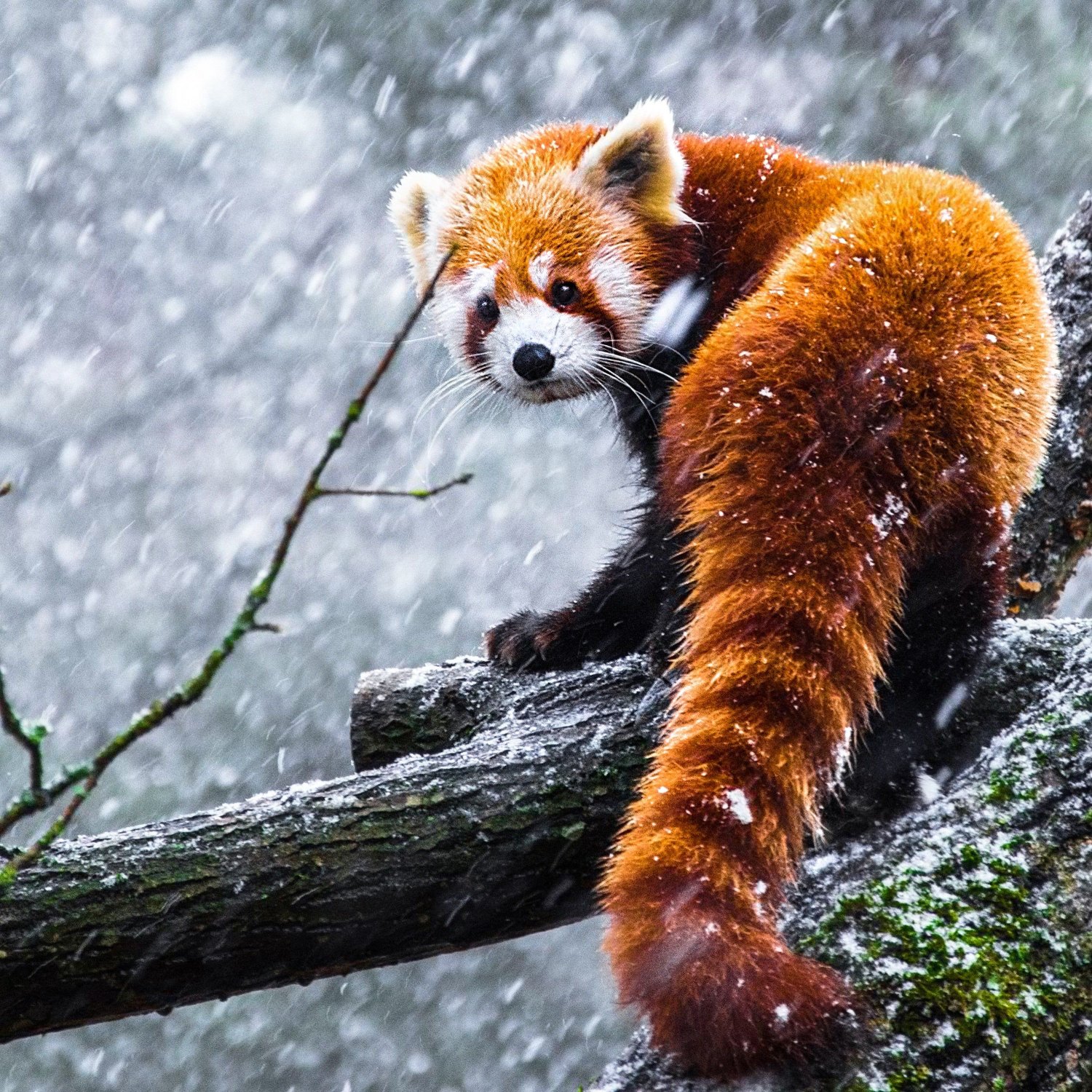
Red Panda
50-64 cm
The Red Panda, also known as the firefox, is a small and slender creature found in Asia. With a body length of 50-64 cm, it belongs to the family Ailuridae. These adorable animals are skilled climbers and spend most of their time in the trees. Unfortunately, due to habitat loss and poaching, they are considered vulnerable by the IUCN. Let's raise awareness and do our part in protecting these precious creatures. #RedPanda #ProtectWildlife #Conservation
Animal Details Summary:
Common Name: Red Panda
Kingdom: Animalia
Habitat: Temperate forests
The Fascinating World of Red Pandas: A Closer Look at Nature's Cutest Carnivores
As a lover of nature and all its diverse creatures, one cannot help but be enamored by the charming and cuddly-looking animal known as the Red Panda. With its striking reddish-brown coloration and petite body, this species captures the hearts of people all around the world. But there's more to these adorable animals than just their cute appearance – the Red Panda also has a fascinating history and unique characteristics that set it apart from other animals. In this article, we will delve deeper into the world of Red Pandas, exploring their habitat, feeding habits, distribution, and more Red Panda.The Science Behind the Name
Scientifically known as Ailurus fulgens, the Red Panda belongs to the Animalia kingdom and Chordata phylum, making them part of the same family as other mammals such as bears, cats, and dogs. The Ailurus genus is derived from the Greek words "ailouros," meaning "cat," and "fulgens," which translates to "shining" or "bright" – a fitting name for these colorful creatures. The species name, fulgens, is due to their reddish-brown coloration, making them one of the few mammals with this distinctive hue.The Red Panda's Home: Where Do They Live?
Native to the temperate forests of the Himalayas and southwestern China, the Red Panda is commonly found at elevations of 2,200 to 4,800 meters above sea level. Their preferred habitat consists of dense bamboo forests, where they can find ample food and shelter. These forests are typically characterized by a cool and moist climate, ideal for the Red Panda's thick fur and sensitive paws.Eating Habits: Carnivorous but With a Twist
Despite being classified as carnivores, Red Pandas have a diet that differs from most other meat-eating animals. Their diet primarily consists of bamboo leaves, bamboo shoots, and fruits. However, they also have a unique adaptation – a modified wrist bone that acts as an opposable thumb, allowing them to grip and hold bamboo shoots while eating Russels Viper. They also supplement their diet with insects, birds' eggs, and small rodents, making them a versatile and adaptable species.Exploring Geographical Distribution
While Red Pandas have a limited distribution, they are found in several regions around the world. Aside from their native countries of China and the Himalayas, they can also be found in Nepal, India, and Myanmar. Due to their popularity, some countries have also introduced Red Pandas into their zoos, including Japan, Germany, and the United States.Country of Origin and Location
The Red Panda's country of origin is China, where they are also referred to as "hun-ho" or "firefox." Chinese culture holds a special place for this species, often incorporating their image into traditional festivals and ceremonies. Additionally, it is estimated that over 50% of the Red Panda's population resides in China, making it an essential location for conservation efforts.The Red Panda's Unique Coloration and Body Shape
One cannot talk about Red Pandas without mentioning their unique physical characteristics. As their name suggests, their reddish-brown color sets them apart from most animals, with the exception of a few other species. They also have a white mask-like pattern on their face, giving them a rather curious and mischievous appearance.In addition to their vibrant coloration, Red Pandas are also easily recognized by their small and slender body shape. Measuring 50-64 cm in length, they are approximately the size of a domestic cat. However, their thick and fluffy fur makes them appear much larger, providing insulation and protection from the harsh mountain climates.
The Significance of Conservation
Despite their appeal and popularity, Red Pandas are facing several threats to their survival. The primary causes for their declining population include habitat loss, poaching, and climate change. The United Nations has listed Red Pandas as an endangered species, and their current population is estimated to be less than 10,000 individuals.To combat this decline, several conservation efforts have been put in place, including captive breeding programs, increasing protection of their habitats, and educating the public about this species' importance. By raising awareness and taking action, we can help ensure that these adorable creatures continue to thrive in their natural habitats.
In Conclusion
In the vast world of animals and their unique adaptions, Red Pandas stand out as one of the most charming and fascinating creatures. From their vibrant coloration and modified wrist bone to their preferred bamboo diet, they are a species that continues to amaze and capture our hearts. While they may be small in size, their significance to the ecosystem cannot be understated. Let us continue to appreciate and protect these adorable carnivores, ensuring that future generations can also experience the beauty of the Red Panda.

Red Panda
Animal Details Red Panda - Scientific Name: Ailurus fulgens
- Category: Animals R
- Scientific Name: Ailurus fulgens
- Common Name: Red Panda
- Kingdom: Animalia
- Phylum: Chordata
- Class: Mammalia
- Order: Carnivora
- Family: Ailuridae
- Habitat: Temperate forests
- Feeding Method: Carnivorous
- Geographical Distribution: Himalayas and southwestern China
- Country of Origin: China
- Location: Asia
- Animal Coloration: Reddish-brown
- Body Shape: Small and slender
- Length: 50-64 cm
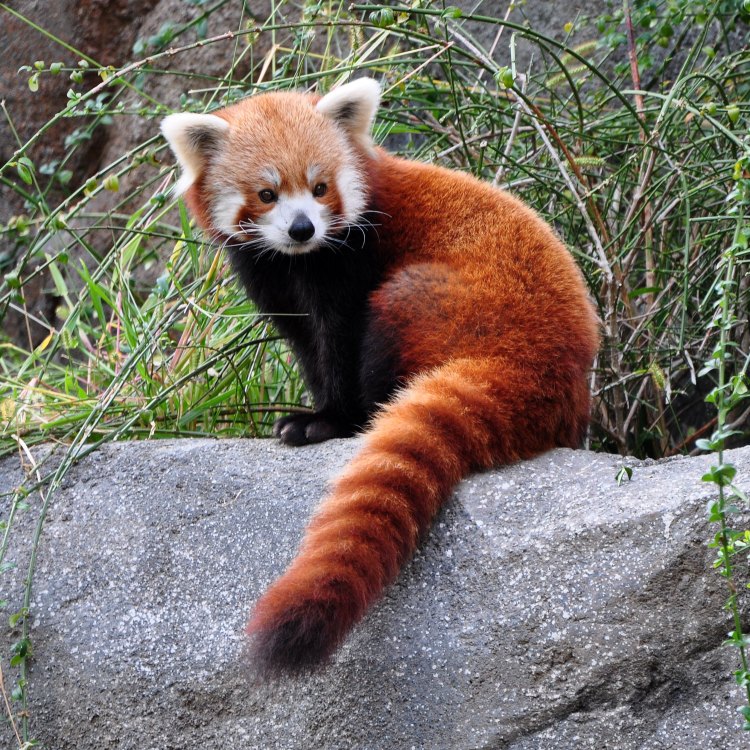
Red Panda
- Adult Size: 3-6 kg
- Average Lifespan: 8-10 years
- Reproduction: Sexual
- Reproductive Behavior: Polygynous
- Sound or Call: Whistles, squeals, and twitters
- Migration Pattern: Sedentary
- Social Groups: Solitary or in small family groups
- Behavior: Nocturnal and arboreal
- Threats: Habitat loss and fragmentation, poaching, and climate change
- Conservation Status: Endangered
- Impact on Ecosystem: Seed dispersal and forest regeneration
- Human Use: Hunting for fur and deforestation for agriculture
- Distinctive Features: Bushy tail and reddish coloration
- Interesting Facts: Red pandas are not closely related to giant pandas, and they have a false thumb that helps them grip bamboo shoots.
- Predator: Snow leopards, martens, and humans

Ailurus fulgens
The Secret World of the Mysterious Red Panda: A Tale of Survival
In the dense, mountainous forests of the Eastern Himalayas, a charismatic creature roams the treetops. Its soft, reddish-brown fur blends seamlessly with the autumnal colors of its habitat, earning it the nickname "firefox" or "lesser panda." But don't let its diminutive size and playful appearance fool you – the red panda is a true survivor, facing numerous threats in its struggle for survival.Red pandas (scientific name: Ailurus fulgens) are native to South Asia, specifically the mountainous regions of Nepal, Bhutan, China, India, and Myanmar PeaceOfAnimals.Com. They are solitary creatures, primarily active at night, and spend most of their time in the trees, making them elusive and challenging to study. However, recent advances in technology have allowed researchers to uncover some of the secrets of this intriguing animal's life.
Adult Size and Average Lifespan
Red pandas are relatively small mammals, roughly the size of a house cat. They typically weigh between 3-6 kg, with the males being slightly larger than females. Their size allows them to navigate the canopy effortlessly, using their bushy tail for balance or warmth during cold winter nights. Despite their small stature, red pandas can live up to 8-10 years in the wild and even longer in captivity.
Reproduction and Reproductive Behavior
Red pandas are sexually mature at around two years of age. Unlike their bamboo-eating cousins, the giant pandas, red pandas are not monogamous. They have a polygynous reproductive behavior, where the male mates with multiple females during the breeding season Rhino Beetle. Mating typically occurs in January-February, after which the male leaves to find other potential partners.
Sound or Call and Migration Pattern
Being primarily solitary creatures, red pandas do not communicate with vocalizations as much as other mammals do. However, they are known to produce a variety of sounds, including whistles, squeals, and twitters, especially during the breeding season. These sounds help in establishing contact with potential mates and defining territory boundaries.
Unlike many other animals, red pandas do not migrate. They are sedentary creatures, preferring to stay within a specific range of their habitat, usually around 1-2 square kilometers. This behavior makes them particularly vulnerable to threats such as habitat loss and fragmentation.
Social Groups and Behavior
Red pandas are solitary creatures, except during the breeding season. However, they have been observed living in small family groups consisting of parents and their offspring. They are primarily nocturnal, meaning they are most active during the night. They are also arboreal, spending most of their time in the trees, feeding and resting.
Despite being known for their gentle demeanor, red pandas are quite territorial. They use their scent glands to mark their territory, and if provoked, can display aggressive behavior, including hissing, growling, and even standing on their hind legs.
Threats and Conservation Status
Despite being well-adapted to their natural habitat, red pandas are facing an ever-growing list of threats. The most significant threat is habitat loss and fragmentation, primarily due to deforestation for agricultural purposes and logging. As a result, their already limited range is decreasing, leading to a decline in population numbers.
Poaching is another significant threat faced by red pandas, as their fur is highly valued in the international market. In some cultures, their fur is used in traditional clothing, making them a target for illegal wildlife trade.
Climate change is also having a significant impact on red pandas. As their habitat becomes drier and warmer, the bamboo plants they rely on for food are declining in quality and quantity, making it challenging for them to survive.
Due to these threats, red pandas are now classified as endangered on the IUCN Red List. It is estimated that there are only about 10,000 individuals left in the wild, with a decreasing population trend.
Impact on Ecosystem and Human Use
Despite their small size, red pandas play a crucial role in their ecosystem. Being primarily herbivores, they help in maintaining a balance in the forest's plant life by controlling bamboo growth. Interestingly, red pandas have a unique digestive system that allows them to break down the tough cellulose in bamboo, making them essential for their habitat's health.
Unfortunately, humans have been exploiting red pandas for centuries. Hunting for their fur and habitat destruction for agriculture have significantly reduced their numbers. However, in recent years, there have been efforts to promote ecotourism and increase awareness about the conservation of these animals among local communities.
Distinctive Features and Interesting Facts
One of the most distinctive features of red pandas is their bushy tail, almost equal in length to their body. They use their tail for balance, but it also serves as a warm blanket during winter months. They also have a reddish-brown coloration, perfectly camouflaging them in their habitat.
Contrary to popular belief, red pandas are not closely related to giant pandas. They are actually classified under their own family, Ailuridae, and are more closely related to raccoons and weasels. Another interesting fact about red pandas is that they have a "false thumb" – an extended wrist bone that acts as an extra digit, helping them grip bamboo shoots.
Predators
While humans are the primary predators of red pandas, they also face threats from snow leopards, martens, and domestic dogs. Snow leopards are the red panda's main predator, as they share the same habitat and diet. Martens, on the other hand, are known for their agility in tree-climbing, making them a threat to red pandas.
The Fight for Survival
Despite all the threats they face, red pandas continue to survive in the harsh conditions of the Eastern Himalayas. However, their population is decreasing rapidly, and urgent action is needed to protect them. The good news is that there are conservation efforts underway to save the red panda, such as habitat protection, breeding programs in captivity, and efforts to mitigate human-wildlife conflict.
As humans, it is our responsibility to ensure the survival of this fascinating and charismatic species. We must work towards protecting their habitat and spreading awareness about the importance of conservation. Because if we lose the red panda, we lose a living piece of our natural heritage and a vital part of our ecosystem. So, let's join hands and help the "lesser panda" thrive in its secret world.

The Fascinating World of Red Pandas: A Closer Look at Nature's Cutest Carnivores
Disclaimer: The content provided is for informational purposes only. We cannot guarantee the accuracy of the information on this page 100%. All information provided here may change without prior notice.




